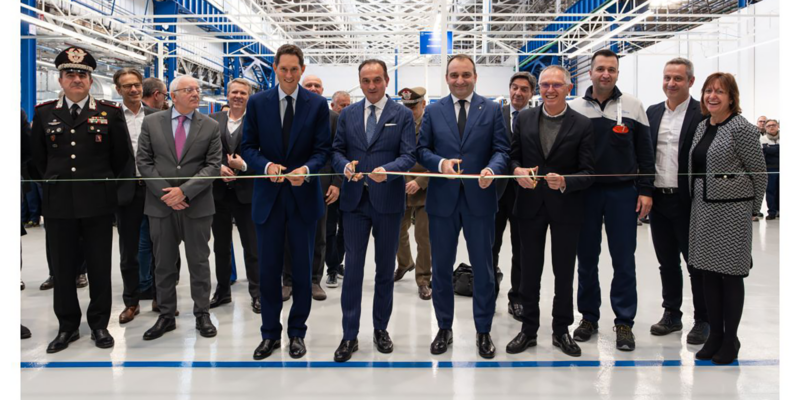Sign up for daily news updates from CleanTechnica on email. Or follow us on Google News!
 A few years ago, when I first got an EV, I figured out pretty quickly how important infrastructure was. I had a first-generation Nissan LEAF, and there were basically no local chargers. This meant that instead of being able to drive 100 miles, I could only drive 50 miles from my house, because the other 50 miles were needed to get back home! As level 2 chargers started popping up in the nearest semi-large city (El Paso), I started going there in the EV more, but only when I wanted to spend time at the mall or grocery store that had them.
A few years ago, when I first got an EV, I figured out pretty quickly how important infrastructure was. I had a first-generation Nissan LEAF, and there were basically no local chargers. This meant that instead of being able to drive 100 miles, I could only drive 50 miles from my house, because the other 50 miles were needed to get back home! As level 2 chargers started popping up in the nearest semi-large city (El Paso), I started going there in the EV more, but only when I wanted to spend time at the mall or grocery store that had them.
At this point, I climbed the first little hill on the Dunning-Kruger curve, to a place most people call the “Peak of Mount Stupid.” I was one of only a handful of people in my county with an EV, so that meant I must know a lot! So, surely, if I wanted to find a way to get a Level 3 fast charger installed locally, I’d find out how. Maybe if I found a supplier of a charging station, hired an electrician to connect it, and found a business to host it, we’d finally be able to get more EVs in the region surrounding El Paso!
But, the more I looked into it, the more I realized that this wasn’t nearly as easy as I thought it would be.
Even if I managed to come up with a DC fast charger, getting enough power for a medium-speed one wouldn’t be easy. Utility companies told me about some major costs, most of which would end up being borne by whoever paid the power bill. The power company rep said to expect at least a six month wait, and possibly as much as a year. So, these things needed to be planned well in advance.
Even if I managed to get that part funded, the old Billy Mays Problem (“But wait, there’s more!”) cropped up. Except instead of getting an extra tub of Oxi Clean, I found out that after you get a Level 3 fast charger, they charge you a whopping fee every month for your peak power use, based on the highest 15 minutes of power you used. In the case of a lowly 50 kW charger, that meant over $600 per month. Because it’s per kilowatt, a station with multiple 100+ kW stalls would cost $2400 per month, minimum.
After learning about all this, I knew why the whole El Paso region didn’t have a single DC fast charging station, and wouldn’t for years. Tesla eventually put in Superchargers (2017), and later Electrify America put in a small station (2019). Nobody else would do any until 2023, when more grant money became available.
Jule Has A Good Way Around This Problem
We recently heard from Jule about an innovative solution to this problem. Instead of drawing power directly from the grid, they use a more reasonable grid connection to charge batteries. That way, when the EV driver arrives, they can still get a quick charge without the station’s owner needing to shell out big bucks for demand fees every month.
Jule gave us some very good and detailed data about the actual cost savings.
In this graphic, they show not only the problem of high costs, but how much batteries can save you during the install. Plus, the accelerated installation time saves you on overall cost by eliminating the idle time waiting for power after investing in utility infrastructure. Instead, you save money and get to serving customers and/or your fleet faster.
When you consider demand charges (which can exceed $4,000/mo for two 150 kW chargers), the cost savings are even more drastic. In one sample scenario the company provided, the cost was reduced to only $1,240 per month. For larger stations, the savings are even better.
On top of cost savings, it’s a great way to keep strain off the local electric grid, give your customers more reliable charging through buffering, avoid electrical upgrades, get the station online faster (only about three months!), and get control of utility expenses with easy software controls.
While it’s still a lot more expensive than I thought back when I first got into EVs, they show that the cost can be brought down a lot closer to earth. By using battery storage in conjunction with a DC fast charger, the lower cost is something businesses of any size can more easily afford.
Another key benefit is reliability. With battery storage, your charging station can keep serving drivers even during power outages and high grid demand. This is not only great for drivers, but keeps your station making money while competitors are out of order.
So, you’re not only online in only around three months, but you stay online more!
If you’d like to learn more about Jule’s battery-powered EV fast charging stations, be sure to check them out here.
This article is sponsored by Jule.
Have a tip for CleanTechnica? Want to advertise? Want to suggest a guest for our CleanTech Talk podcast? Contact us here.
EV Obsession Daily!
I don’t like paywalls. You don’t like paywalls. Who likes paywalls? Here at CleanTechnica, we implemented a limited paywall for a while, but it always felt wrong — and it was always tough to decide what we should put behind there. In theory, your most exclusive and best content goes behind a paywall. But then fewer people read it!! So, we’ve decided to completely nix paywalls here at CleanTechnica. But…
Thank you!
Tesla Sales in 2023, 2024, and 2030
CleanTechnica uses affiliate links. See our policy here.





